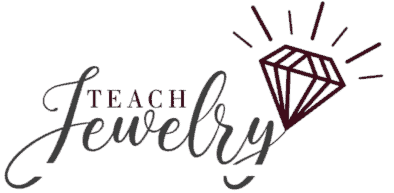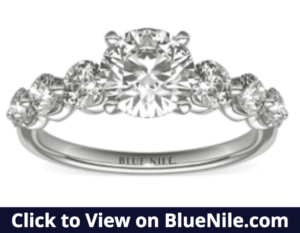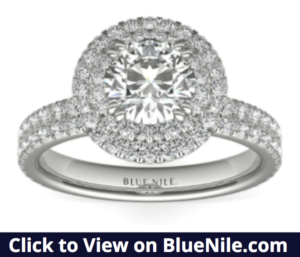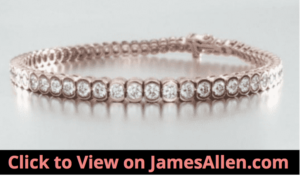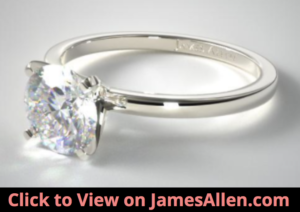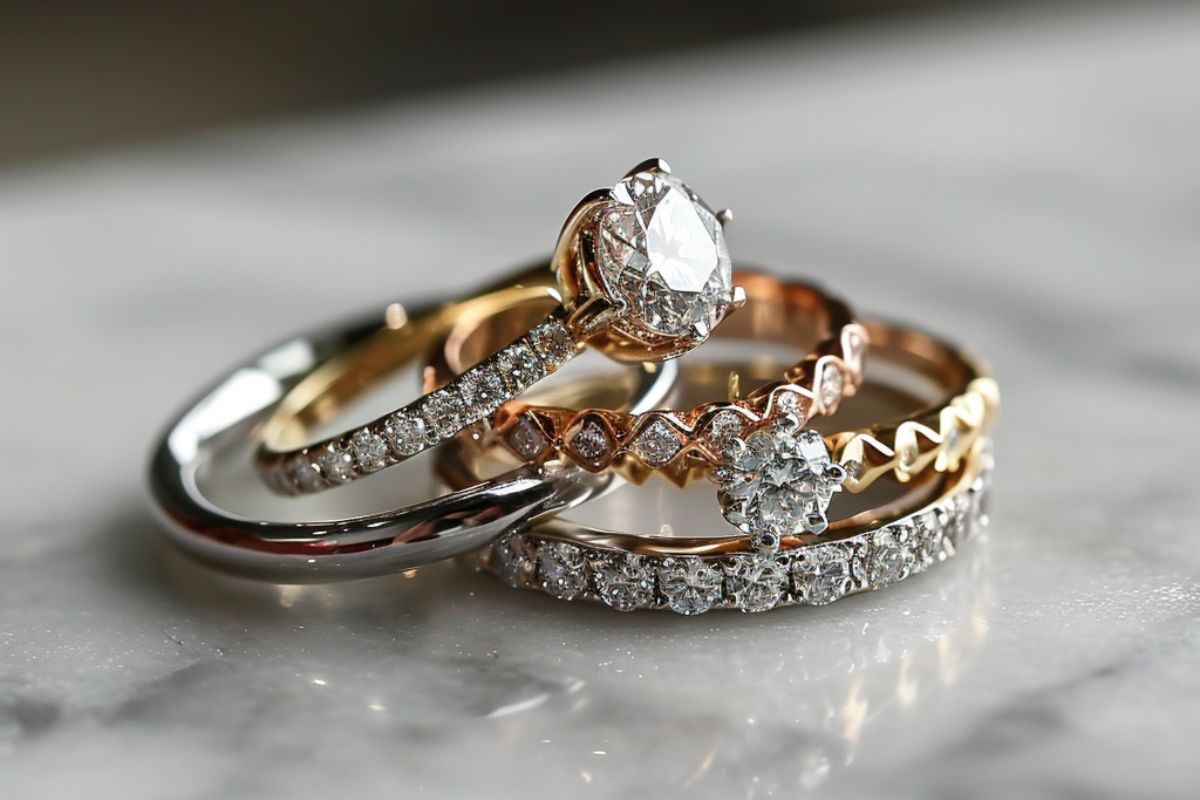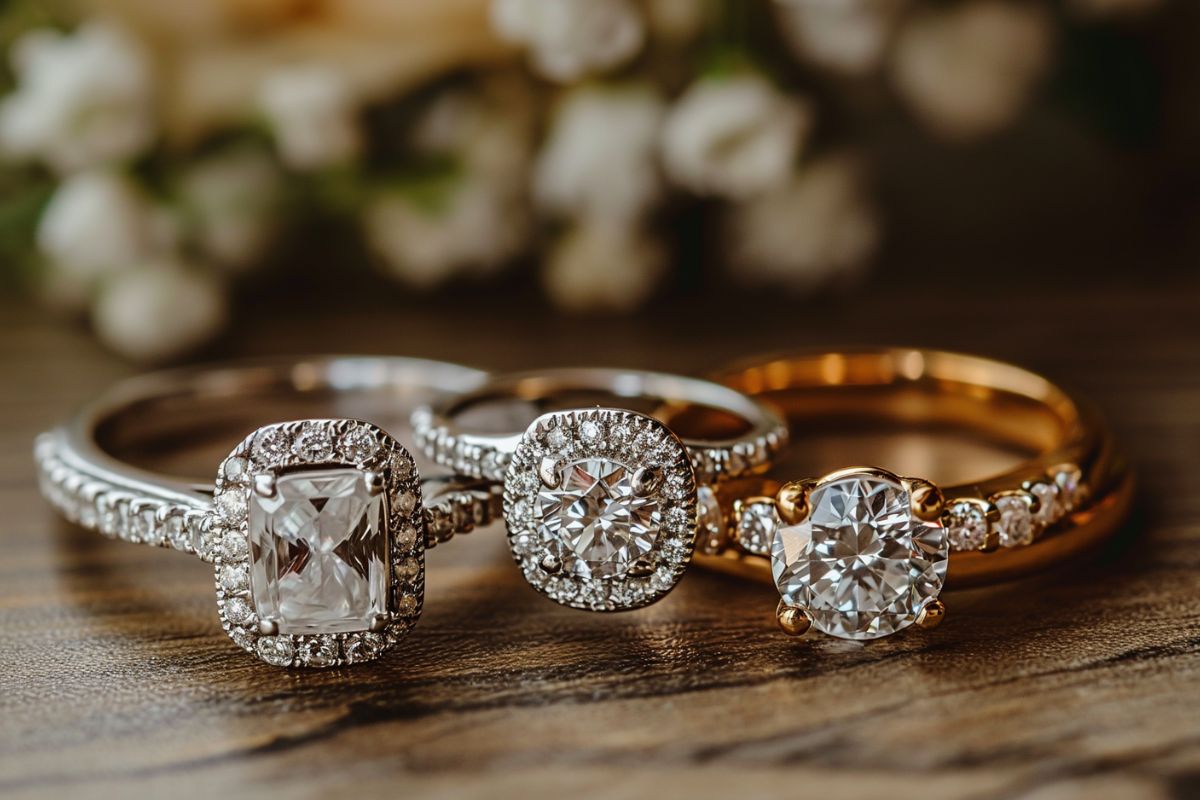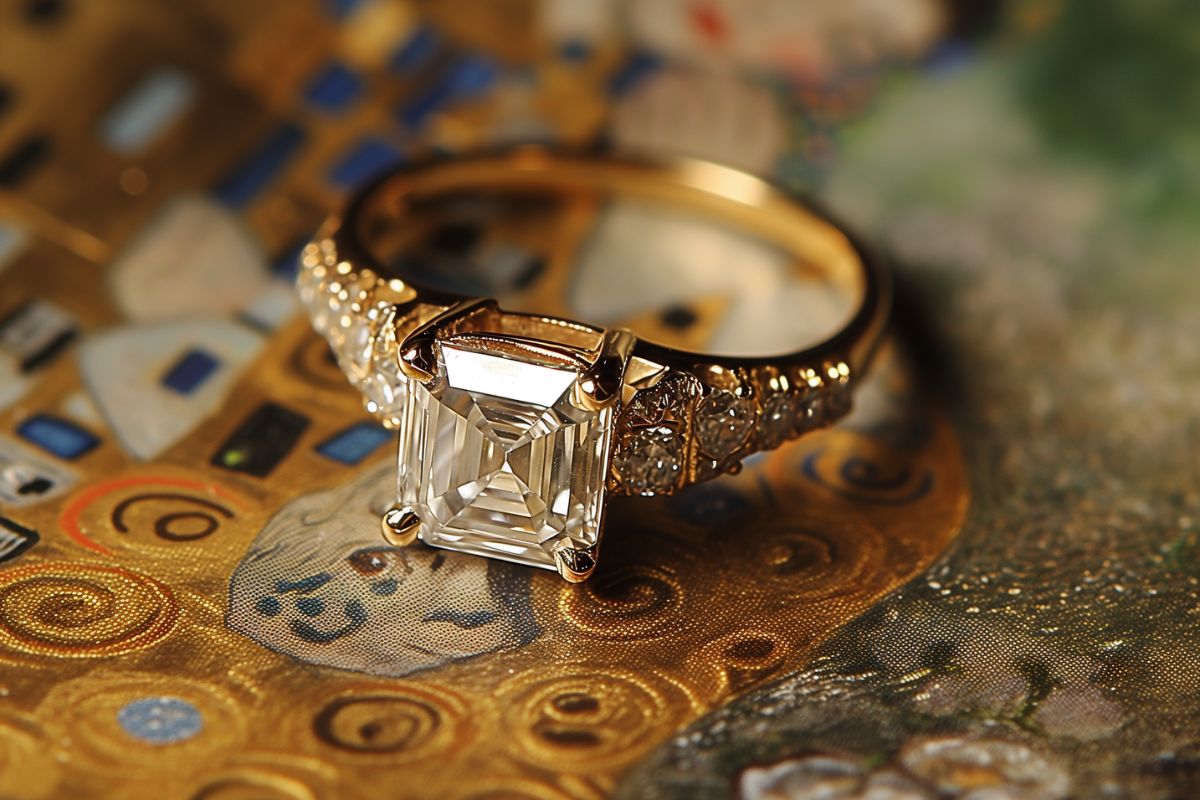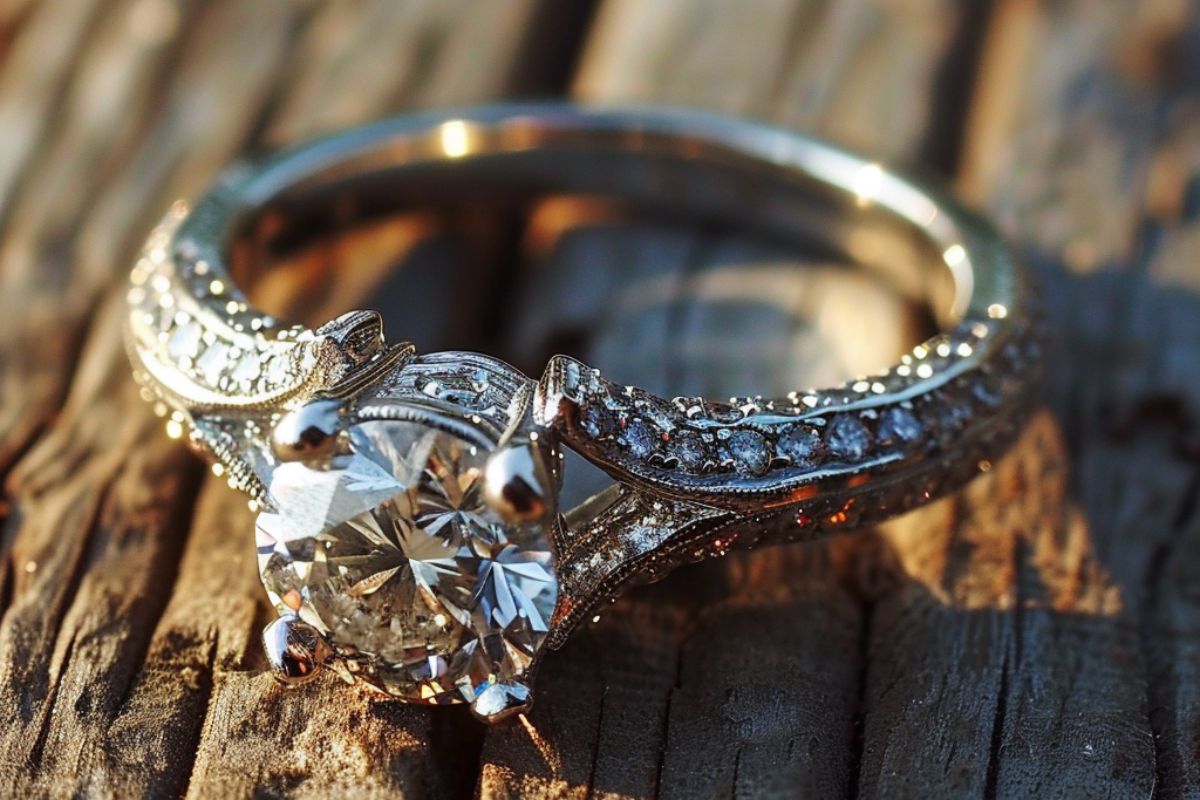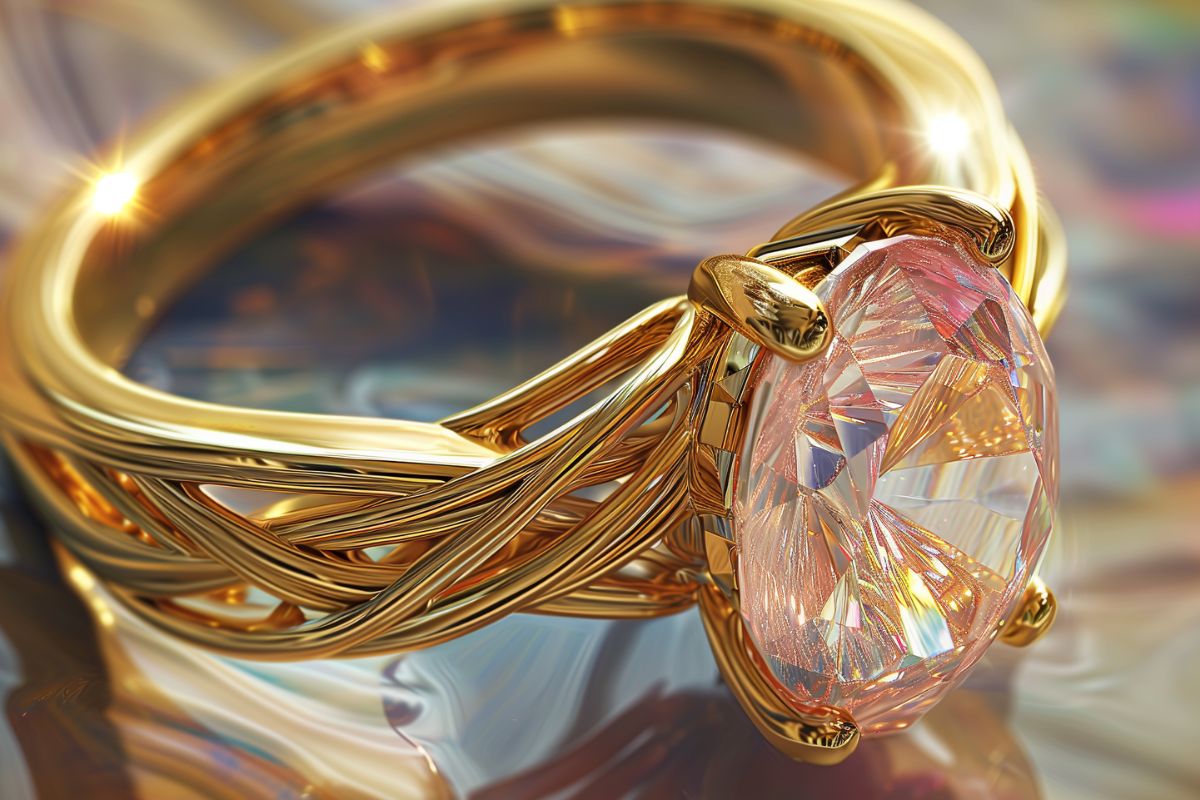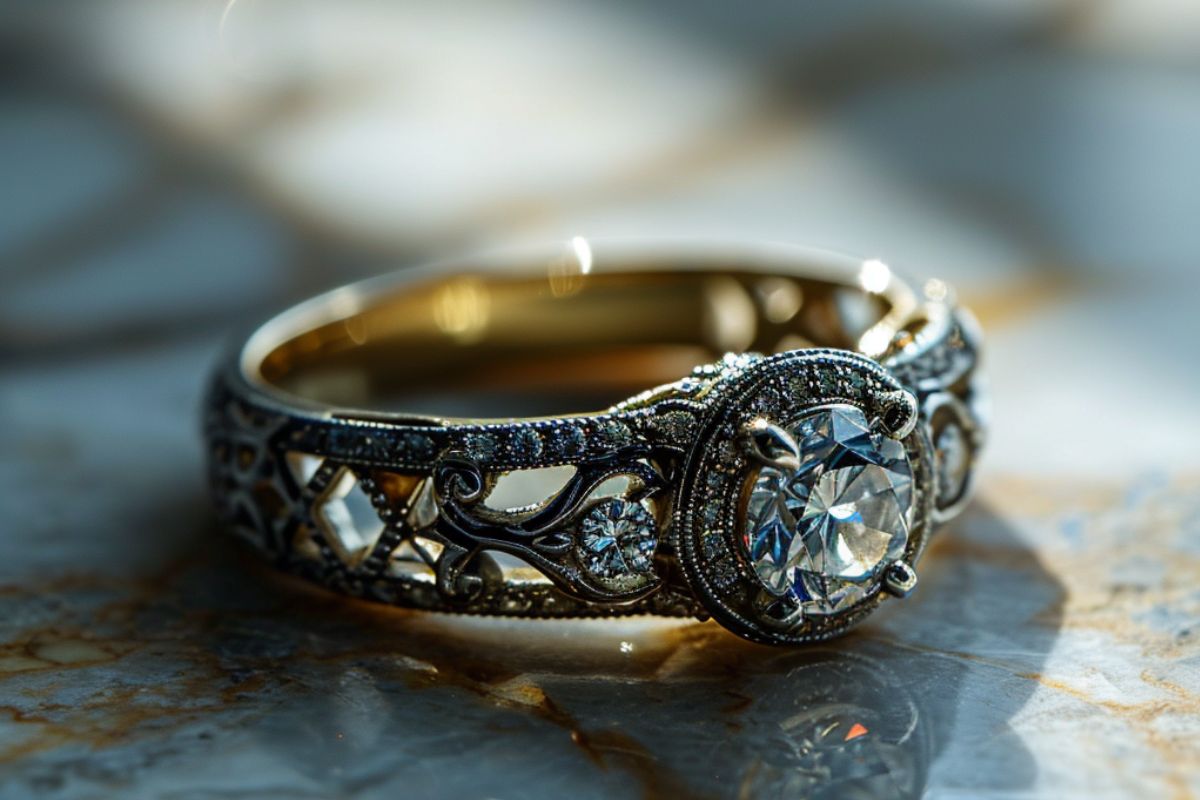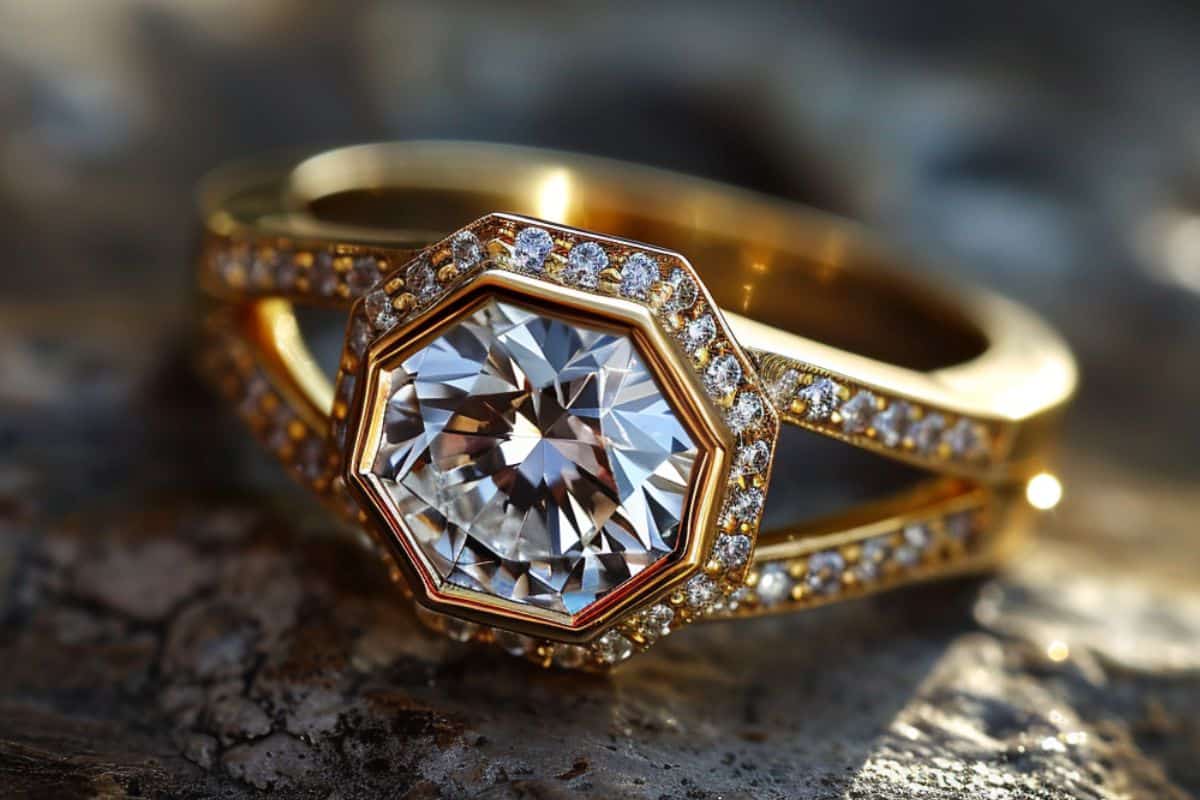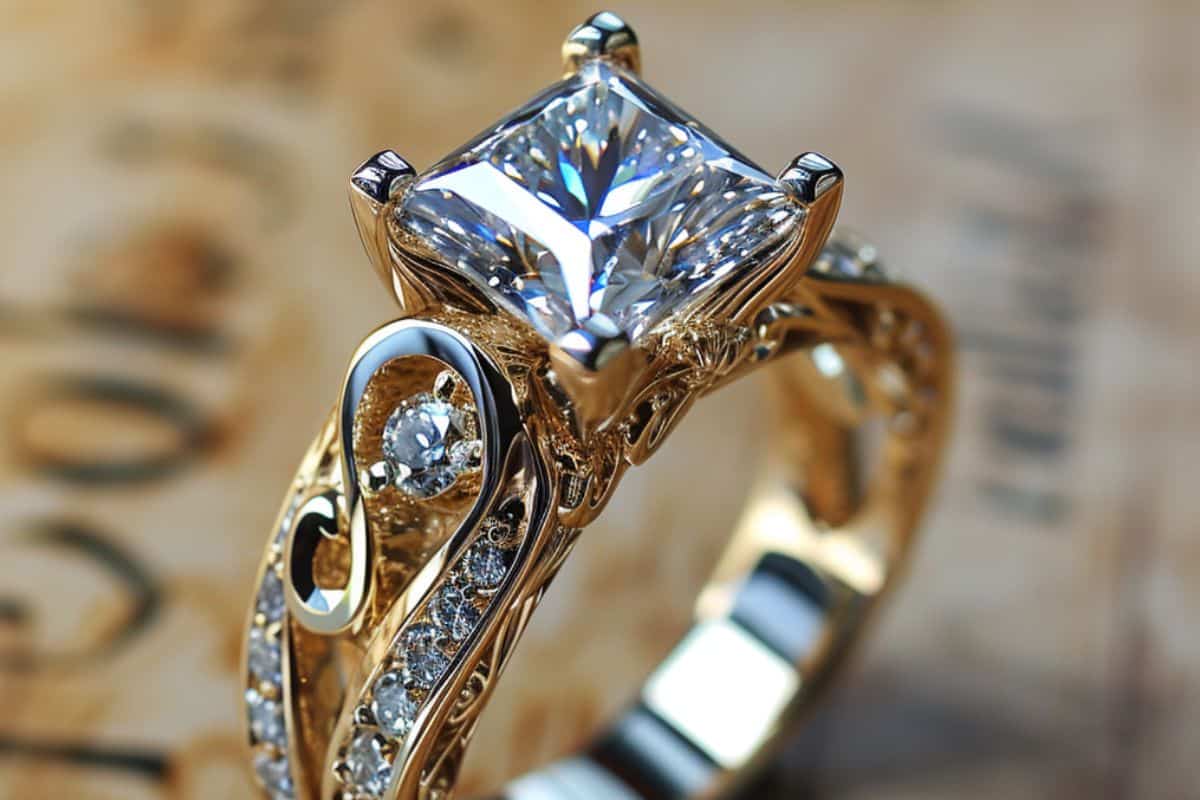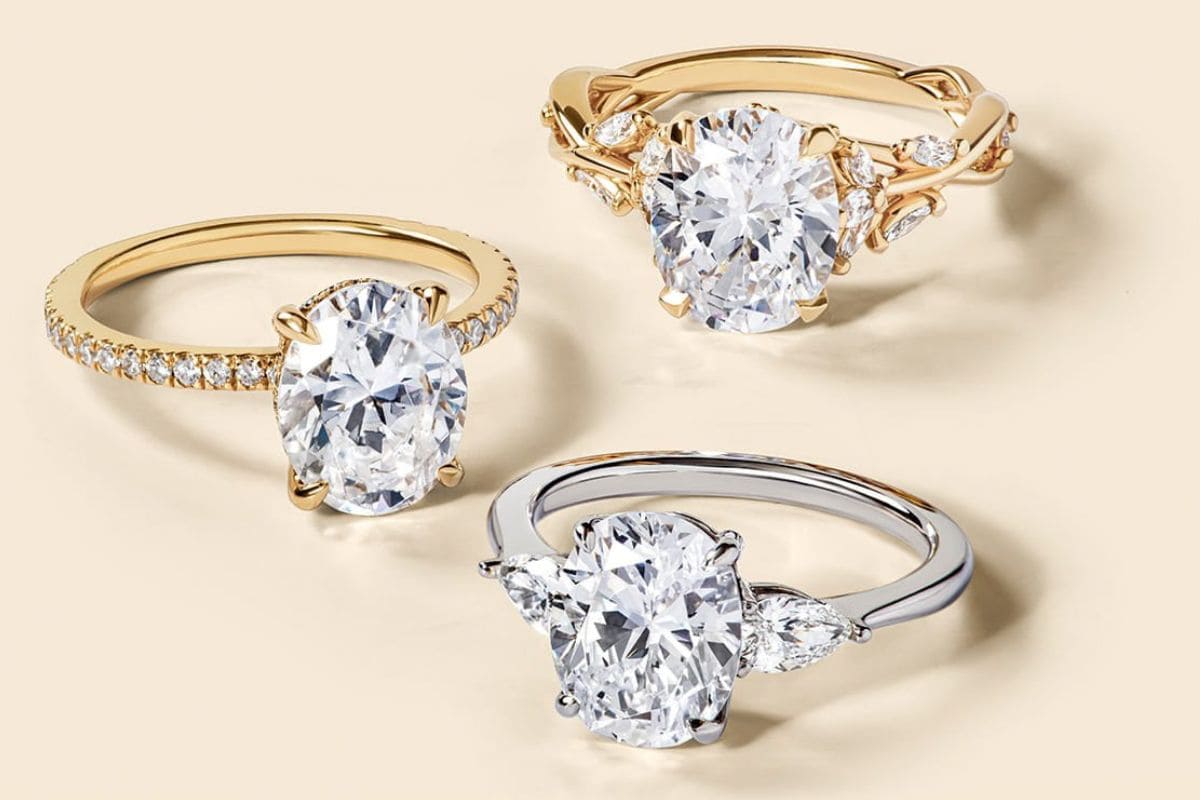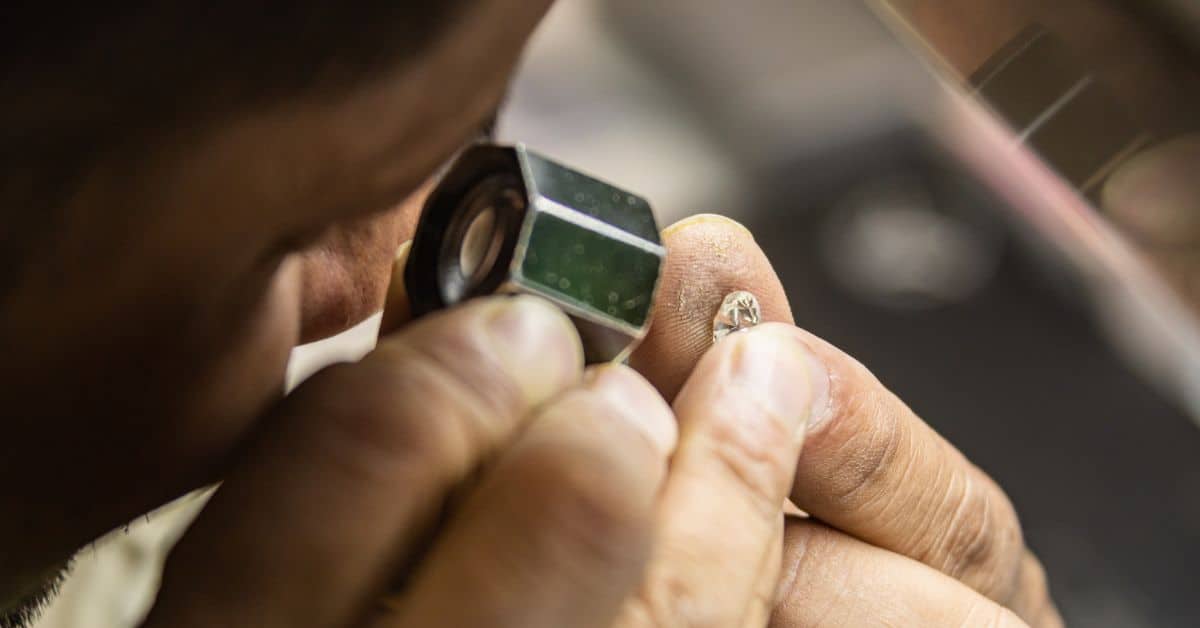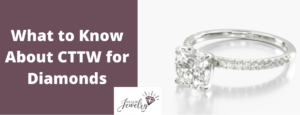
If you’re searching for a diamond, you’ve probably heard of the four Cs (color, cut, clarity, and carat).
The one most shoppers try to maximize most is carat weight.
Larger diamonds — whether part of a diamond ring, necklace, or earrings — have special appeal but also come with a premium price, which is why it’s important to know how carats are measured on a piece of jewelry.
That includes knowing what CTTW on a diamond means.
We’ll explore everything to know about CTTW, including:
- What it stands for
- CTTW vs carat weight
- Affects on price
- How to find the right carat weight
Let’s dive into these details.
What Does CTTW Mean?
You might notice the carat weight of a piece of jewelry labeled with the acronym “CTTW.”
CTTW stands for “total carat weight” or “carat total weight” and indicates the total weight of all the diamonds in a piece of jewelry.
For a diamond ring, CTTW is the total weight of all the diamonds in the piece, which would include the center stone as well as any accents, side stones, or pave.
When you’re shopping online for a diamond ring, it’s common to select the setting and diamond separately. For the setting, online retailers also display the CTTW of just the setting. So you’d add that number to whatever size diamond you buy.
For example, this floating diamond engagement ring setting has a CTTW of 0.78.
That means the six round diamonds set on the ring are about 0.13 carats each. You then add the carat of the center diamond.
If you select a 1.25 carat center diamond, the CTTW is 2.03.
As another example, this double halo gala diamond engagement ring features French pave-set diamonds around a center stone.
The pave-set diamonds total 0.88 carats, so a one-carat center diamond would equal a CTTW of 1.88.
CTTW vs. Carat
When someone states the size of a diamond, they generally aren’t referring to its dimensions, which are measured in millimeters. Instead, they use a unit of weight called a carat.
One carat is equal to 200 grams.
While heavier diamonds are often look larger than lighter ones, that’s not always the case. For example, if you placed a 0.90 carat marquise cut next to a one-carat Asscher cut, you might assume the marquise is larger because of how the weight is distributed.
So remember when a jeweler is talking about carats, they aren’t talking about size.
CTTW (also written as CTW) differs from carat in that CTTW is the added weight of every diamond, while carat is referring to only one diamond. So if a diamond has one center stone and two side stones, you’d want to know the carats of all three individually and also the CTTW.
Or if a piece of jewelry has diamonds that are all the same size, you can learn how many carats each diamond is by dividing the CTTW by its number of diamonds.
For example, this 14K rose gold diamond tennis bracelet has a CTTW of three.
It has 64 total stones of equal size, so we know the carat of each stone is about 0.05.
On the other hand, some pieces of jewelry feature just one diamond. If you were to pair a 1.05 carat round diamond with this 1.5mm comfort fit engagement ring, which features no diamonds, the CTTW would just be 1.05.
How Does it Affect the Price of Jewelry?
Knowing the difference between CTTW and carat is incredibly important when it comes to the prices of jewelry. If you don’t know the distinction, you could overpay by hundreds or thousands of dollars, because CTTW and carat significantly impact value.
This is because the price of a diamond increases disproportionately as its weight increases.
Let’s take the example of three diamonds from James Allen that are the same color, cut, and clarity, but differ in carat.
You can buy a 0.50 ct diamond from James Allen for about $1,350. If we increase the diamond by 0.50 carats to make it a one-carat diamond, its price does not just double — it’s $5,000. If we add another 0.50 carats, the price goes up to $12,490.
Why is the diamond that has three times as many carats not just three times the price?
Because larger diamonds are more rare, and the rate of price increase generally rises with the weight of the diamond.
If this were not the case, you would expect a 1.50 carat diamond to cost three times more than a 0.5 carat diamond, with all other qualities being equal.
To find a more representative sample, I analyzed prices for hundreds of diamonds ranging from one carat to four at intervals of 0.5 carats.
As you can see in the graph below, the increase in price isn’t proportional to the increase in weight, with a four-carat diamond costing more than three times more than one that weighs two carats.
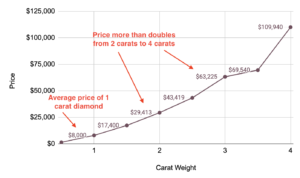
This distinction is why it’s critical to understand the difference between carat and CTTW. If the CTTW of a diamond is split between two or more diamonds, that piece should cost less than if it only had one diamond.
How to Find the Right Carat Weight
There’s numerous criteria to consider when assessing the value of a diamond, but misunderstanding carat versus CTTW is one that could cost you the most if you get it wrong.
So when examining the CTTW of a diamond, don’t expect the price to be the same for a piece where all the carats are in one diamond. Expect a piece to be less expensive if the carats are split up among more than one diamond.
You can use this to your advantage if your budget is constrained.
For example, if a one-carat solitaire diamond ring costs too much, consider a 0.80-carat gem at its center, surrounding by a 0.20-carat halo or featuring pavé lining the shank. Although that setting will cost more than a solitaire, the total price is likely to come out smaller.
Take the time to examine pieces with one or more diamonds, and you’ll find the carat weight for your jewelry.
CTTW Q&A
Q1: How does CTTW differ from individual carat weight when evaluating a piece of jewelry? A1: CTTW stands for “carat total weight” or “total carat weight” and refers to the combined weight of all diamonds in a piece of jewelry, while individual carat weight refers to the weight of a single diamond.
Q2: Is it better to have a higher CTTW or individual carat weight for a diamond piece? A2: It depends on personal preference and budget. A higher CTTW can provide more sparkle with multiple diamonds, while a higher individual carat weight can offer a bold statement with a single larger diamond.
Q3: How can understanding CTTW help in budgeting for a diamond piece? A3: Knowing the CTTW allows a buyer to compare the overall diamond weight in different pieces, which can be a factor in the price. It helps in finding pieces that fit the budget, for instance, opting for a piece with smaller diamonds that add up to a significant CTTW may be more budget-friendly compared to a single large diamond of the same total carat weight.
Q4: How is the CTTW calculated if the diamonds in a piece of jewelry are of different sizes? A4: The CTTW is calculated by simply adding the carat weight of each individual diamond in the jewelry piece, regardless of their individual sizes.
Q5: Does a higher CTTW always mean a more expensive piece of jewelry? A5: Not necessarily. While CTTW is a factor, the price is also significantly affected by the quality of the diamonds, such as their cut, color, and clarity. A piece with a higher CTTW but lower quality diamonds may be priced lower than a piece with a lower CTTW but higher quality diamonds.
Q6: Can CTTW be used to compare different styles of jewelry, like comparing a ring to a bracelet? A6: While CTTW gives an idea of the total diamond weight, different styles and designs, as well as other factors like metal type and craftsmanship, can make a direct comparison challenging. However, it can provide a baseline for comparing the diamond content.
Q7: How does the distribution of carat weight affect the appearance of a jewelry piece? A7: The distribution can significantly affect the appearance; for instance, a single large diamond may provide a different aesthetic compared to several smaller diamonds adding up to the same CTTW, offering versatility in style choices.
Q8: If a jewelry piece has gemstones other than diamonds, is there a separate total carat weight mentioned? A8: Typically, the carat weight of other gemstones would be mentioned separately from the CTTW which is specifically for diamonds.
Q9: How should one decide between choosing a piece with a higher CTTW versus a piece with a larger individual diamond? A9: It comes down to personal preferences, the desired aesthetic, and budget. Some may prefer the bold statement of a single large diamond, while others may appreciate the sparkle of multiple diamonds contributing to a higher CTTW.
Q10: Is the CTTW of a piece usually visible on the jewelry or its certification? A10: Yes, the CTTW is usually mentioned on the certification or the tag of the jewelry, helping buyers know the total diamond weight in the piece they are considering.

Jacob Clarke
Jacob Clarke is the founder of TeachJewelry.com.
He earned an Applied Jewelry Professional Diploma from the Gemological Institute of America (GIA) and now brings you essential information about diamonds, settings, and more.
Jacob has consulted with leading jewelry brands, and his work has been cited in Clean Origin, Diamond Nexus and industry publications.
He's also a member of the International Gem Society.
He enjoys discussing jewelry with readers, so contact him with any questions at jacob.clarke@teachjewelry.com.
